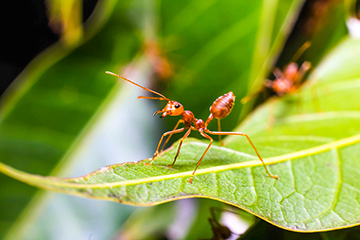
A major feature of insect societies is the existence of reproductive division of labour, whereby reproduction is monopolised by one or a few individuals assisted by a non-reproductive worker caste. In ants, the existence of variations in the number of reproductives is a labile trait that has drawn much attention. The number of queens can be extremely variable among species as well as within species. It is now generally accepted that polygyny (a colony headed by more than one queen) is a derived trait and may be the predominant social structure in ants. The evolution of polygynous colonies from a single queen ancestor may challenge the evolutionarily explanation of reproductive altruism. Ant queens start new colonies in one of two basic ways. They can be either accompanied by workers (i.e. dependent founding) or found colonies independently, without the aid of workers. In the latter case, queens can either found alone (haplometrosis), or they may cooperate with other queens during colony foundation (pleometrosis). The maintenance of this initial cooperation between queens is relatively rare but it exists and can lead to the co-existence of several reproductives within the colony (primary polygyny). However founding associations are generally temporary and soon reduce to a single egg-laying queen (secondary monogyny), either before or shortly after the emergence of the first workers. The process of elimination of all but one co-founding queens is not clearly understood. In contrast to primary polygyny, secondary polygyny develops as a consequence of colony fusion or when established colonies adopt additional inseminated queens that can be daughters of the mother queen, or not, depending on the species and the ecological constraints. This richness and variability in the mode of colony foundation is unique to ants. The diversity of strategies of breeding systems, colony foundation and colony growth has drastic consequences on colony kin structure (within colony relatedness), and therefore on the delicate balance between cost and benefits of eusocial life, which typically underlines internal conflicts over reproduction.
Lire la suite. Download the file
Rapport Séminaire Polygynie Fondation Fyssen 2016
